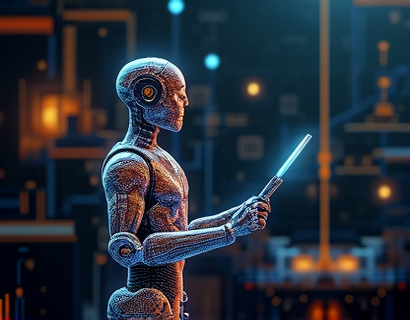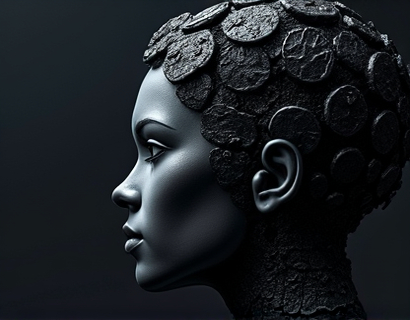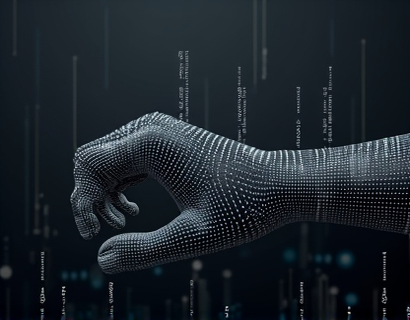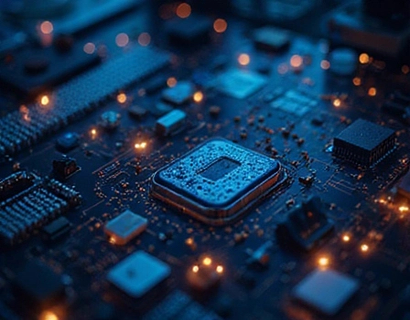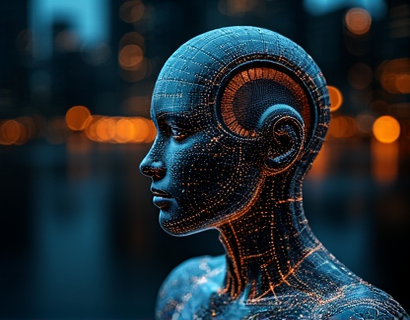Transforming Digital Experiences: The Synergy of Crypto and AI
The intersection of cryptocurrency and artificial intelligence (AI) is revolutionizing the digital landscape, offering unprecedented opportunities for tech innovators and early adopters. This convergence is not just about merging two cutting-edge technologies; it's about creating a new paradigm for digital engagement, security, and efficiency. As we delve into this topic, we will explore how the integration of crypto and AI is reshaping online experiences, providing advanced solutions that enhance online presence and streamline access to the latest applications.
Understanding the Basics: Crypto and AI
To fully appreciate the transformative potential of crypto and AI, it's essential to understand the fundamentals of each technology. Cryptocurrency, often referred to as digital or virtual currency, uses cryptography for security and operates on a decentralized network, typically a blockchain. This decentralized nature ensures transparency, security, and reduces the need for intermediaries.
Artificial intelligence, on the other hand, involves the simulation of human intelligence processes by machines, particularly computer systems. These processes include learning (the acquisition of information and rules for using it), reasoning (using rules to reach approximate or definite conclusions), and self-correction. AI can operate autonomously or be integrated into existing systems to enhance their functionality.
The combination of these two technologies creates a powerful synergy. Crypto provides a secure and transparent platform for transactions and data storage, while AI brings intelligence and automation to optimize these processes. Together, they can create more secure, efficient, and user-friendly digital experiences.
Enhancing Security with Crypto and AI
One of the most significant benefits of integrating crypto and AI is the enhancement of security measures. Traditional online platforms often struggle with security breaches, data leaks, and fraudulent activities. The decentralized nature of blockchain, combined with AI-driven security protocols, can significantly mitigate these risks.
AI can monitor network activities in real-time, detecting anomalies and potential threats with high accuracy. Machine learning algorithms can adapt to new patterns of attacks, making the system more resilient over time. Smart contracts, which are self-executing contracts with the terms directly written into code, can automate and enforce security protocols, ensuring that transactions are only completed when predefined conditions are met.
For tech innovators, this means developing applications with a higher level of security, which is crucial in an era where data breaches are increasingly common. Early adopters can leverage these advanced security features to build trust with their users and maintain a competitive edge.
Optimizing User Experience with AI
AI plays a pivotal role in enhancing user experience across digital platforms. By analyzing vast amounts of data, AI can provide insights into user behavior, preferences, and needs. This data-driven approach allows for the creation of personalized and intuitive interfaces that adapt to individual users.
For instance, AI-powered chatbots can offer 24/7 customer support, handling queries and providing assistance in real-time. These chatbots can understand natural language, learn from interactions, and improve over time, offering a seamless and efficient user experience. In the context of crypto, AI can help users navigate complex financial landscapes, providing personalized investment advice and automating trading strategies.
Moreover, AI can optimize content delivery, ensuring that users receive relevant and timely information. This is particularly useful for platforms that aggregate news, market data, or educational content. By leveraging AI algorithms, these platforms can curate content based on user preferences, enhancing engagement and satisfaction.
Streamlining Access to Crypto Applications
One of the barriers to widespread adoption of crypto applications is the complexity and steep learning curve associated with blockchain technology. The integration of AI can significantly reduce this barrier by simplifying access and usage.
AI-driven onboarding processes can guide users through the setup and usage of crypto applications, making the experience more intuitive and user-friendly. For example, AI can assist in wallet creation, fund transfer, and transaction management, reducing the likelihood of errors and enhancing user confidence.
Additionally, AI can facilitate the development of user-friendly interfaces that abstract the underlying complexity of blockchain technology. This allows non-technical users to benefit from crypto applications without needing to understand the intricacies of the technology. For tech innovators, this means expanding their user base and democratizing access to crypto tools.
Innovative Financial Solutions
The combination of crypto and AI opens up new possibilities in the financial sector. Decentralized finance (DeFi) platforms, for instance, leverage AI to create more efficient and accessible financial services. AI algorithms can analyze market trends, predict price movements, and optimize trading strategies, providing users with data-driven insights.
Smart bonds and decentralized lending platforms can also benefit from AI, automating the issuance and management of financial instruments. AI can assess creditworthiness, manage risk, and execute transactions with minimal human intervention, reducing costs and increasing efficiency.
For early adopters in the financial industry, integrating AI with crypto can lead to the development of innovative products and services that disrupt traditional finance. This not only enhances their competitive position but also contributes to the broader adoption of crypto technologies.
Supply Chain Optimization
Beyond finance, the convergence of crypto and AI can revolutionize supply chain management. Blockchain provides a transparent and immutable ledger for tracking goods and materials, while AI can optimize various stages of the supply chain, from production to delivery.
AI can predict demand, optimize inventory levels, and identify bottlenecks in the supply chain. By integrating these technologies, businesses can achieve greater transparency, reduce costs, and improve efficiency. For instance, AI can analyze data from IoT devices to monitor the condition of goods in transit, ensuring quality and reducing waste.
For tech innovators in the supply chain sector, this synergy offers a competitive advantage by providing end-to-end solutions that enhance visibility and control. Early adopters can leverage these advanced solutions to streamline operations and build trust with customers through transparent and reliable service.
Enhancing Content Creation and Distribution
The creative industry stands to gain significantly from the integration of crypto and AI. Blockchain can provide a secure and transparent way to manage digital assets, such as artwork, music, and videos. AI can assist in content creation, editing, and distribution, making the process more efficient and personalized.
For example, AI-powered tools can generate music, create visual content, and even write articles, reducing the time and cost associated with content production. Blockchain can ensure that creators are fairly compensated for their work, with transparent tracking of ownership and royalties.
Content platforms that leverage these technologies can offer unique value propositions, such as tokenized rewards for engagement, decentralized content moderation, and community-driven curation. This not only enhances the user experience but also fosters a more equitable and sustainable ecosystem for content creators.
Conclusion
The convergence of cryptocurrency and artificial intelligence is transforming digital experiences in profound ways. By enhancing security, optimizing user experiences, streamlining access to applications, and revolutionizing various industries, this synergy offers immense potential for tech innovators and early adopters. As the technology continues to evolve, those who embrace this convergence will be well-positioned to lead the next wave of digital innovation.











